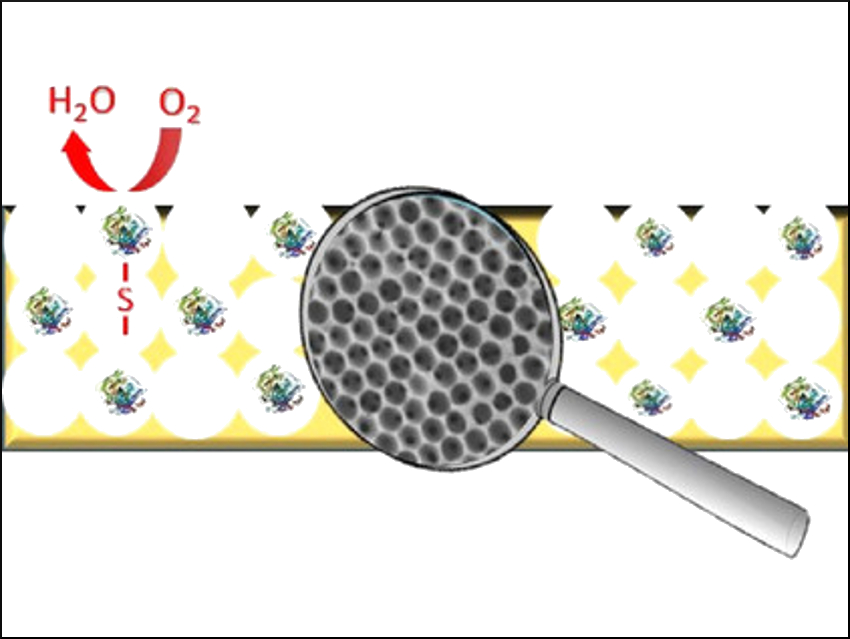Bilirubin oxidase (BOD) is a multi-copper oxidase enzyme that is often immobilized on electrodes and used as an electrocatalyst for the oxygen reduction reaction (ORR). Depending on the immobilization method, the enzyme can undergo either direct or mediated electron transfer (DET or MET). DET is usually preferred. Compared to MET, here the the electrons are directly transferred between the enzyme and the electrode which saves a step in the electron transfer chain. This can avoid losses of open-circuit potential in a biofuel cell or sensitivity in a biosensor. To provide efficient DET, the orientation of the enzyme needs to be controlled so that the active center is very close to the electrode surface.
Molecular engineering of enzymes can be used to introduce individual amino acids that can help create a covalent bond to the electrode surface and immobilize the enzyme. This only works when the mutation is properly positioned on the enzyme structure. It is also important to control the micro- and nanostructure of the electrode for fine-tuning its surface area and creating the proper microenvironment for the enzyme and its substrate.
Alexander Kuhn, Nicolas Mano, University Bordeaux, Pessac, France, and colleagues have engineered a BOD mutant with a cysteine residue located close to the active center of the enzyme. They also developed highly ordered macroporous gold electrodes with a large surface area. Either a wild type BOD or the mutant enzyme was immobilized on the gold electrodes through chemisorption. The fine‐tuned macroporous structure allowed the enzymes to retain their activity toward oxygen reduction and provided the researchers with good control of the enzyme loading.
Both enzymes show similar trends in their catalytic activity, but the mutant BOD has improved long-term stability. This approach could benefit both the development of biofuel cells and biosensors.
- Rational Design of Enzyme‐Modified Electrodes for Optimized Bioelectrocatalytic Activity,
Lin Zhang, Cristina Carucci, Stéphane Reculusa, Bertrand Goudeau, Pauline Lefrançois, Sébastien Gounel, Nicolas Mano, Alexander Kuhn,
ChemElectroChem 2019.
https://doi.org/10.1002/celc.201901022




